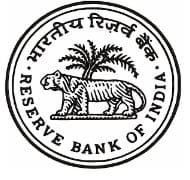RBI keeps repo rate unchanged in first monetary policy review of 2017-18
The Reserve Bank of India (RBI) in its first bimonthly monetary policy review of the financial year 2017-18, has kept the key policy rate, the repo rate unchanged, but raised reverse repo rate by 25 bps to 6%, from 5.75%.
Decision in this regard was taken by monetary policy committee (MPC) —which decides interest rates and all six members of the MPC voted in favour of the decision.
Policy Rates
- Repo rate: It is the rate at which RBI lends to its clients generally against government securities. It was unchanged at 25%.
- This was the third successive quarterly review in which the RBI has kept its repo rate unchanged at 6.25%.
- Reverse Repo Rate: It is the rate at which banks lend funds to the RBI. It was raised the Reverse Repo (RR) rate by 25 bps to 6%.
- Marginal Standing Facility (MSF) Rate: It is rate at which the scheduled banks can borrow funds overnight from RBI against government securities. It is a very short term borrowing scheme for scheduled banks. It was cut to 5%.
- Bank Rate: It is rate charged by the central bank for lending funds to commercial banks. It was set to 5%.
- It influences lending rates of commercial banks. Higher bank rate will translate to higher lending rates by the banks.
- Cash Reserve Ratio (CRR): It is the amount of funds that the banks have to keep with the RBI. It was unchanged at 4%. The RBI uses the CRR to drain out excessive money from the system.
- Statutory Liquidity Ratio (SLR): It was unchanged 20.50%. It is amount that banks have to maintain a stipulated proportion of their net demand and time liabilities (NDTL) in the form of liquid assets like cash, gold and unencumbered securities, treasury bills, dated securities etc.
Key Facts
- The policy decision taken by RBI was consistent with its neutral policy stance with the objective of achieving the medium-term target for retail inflation i.e. 4%.
- The RBI held that the future course of monetary policy would largely depend on incoming data on how macroeconomic conditions are evolving.
- It has set its inflation projection to an average of 4.5% in the first half of 2017-18 and 5% in the second half. It has kept GVA growth projection unchanged at 7.4% for FY18 as compared with 6.7% in FY17.
- The central bank also allowed banks to invest in Real Estate Investment Trusts (REITs) and Infrastructure Investment Trusts (InvITs) in a bid to spur investments in core infrastructure sectors.
Month: Current Affairs - April, 2017


